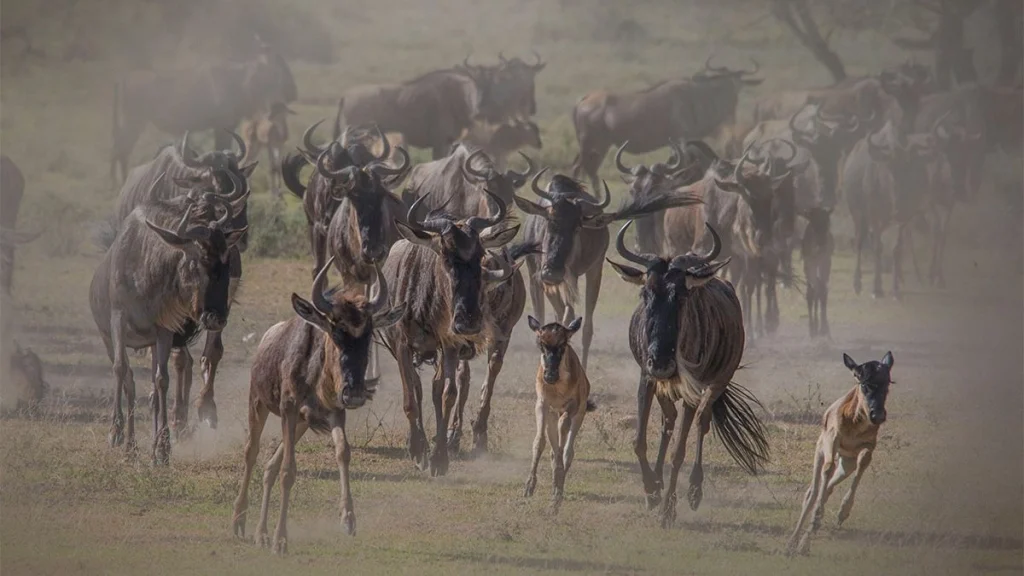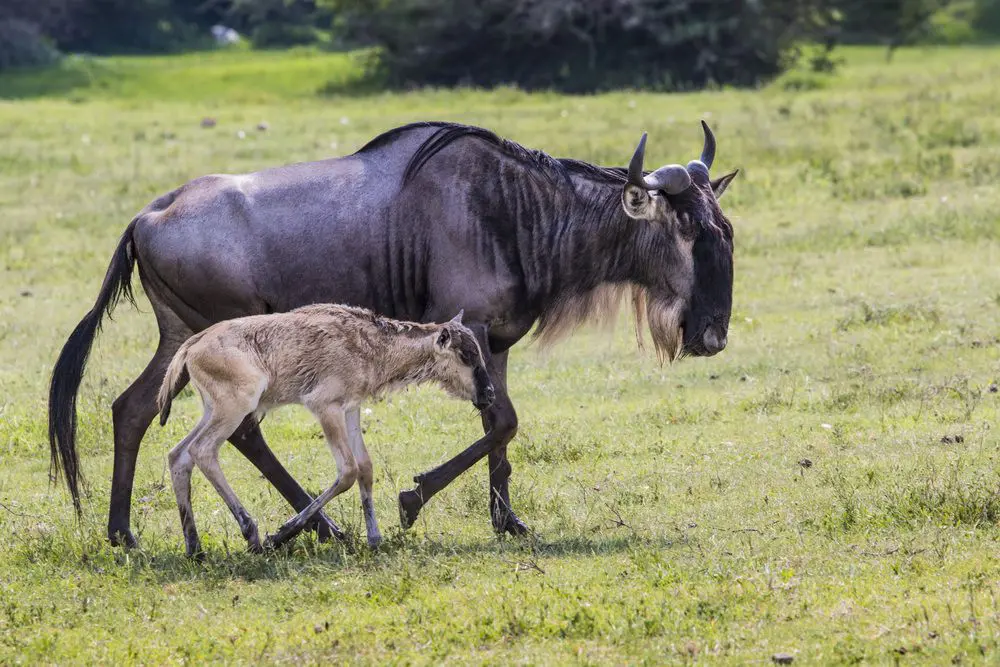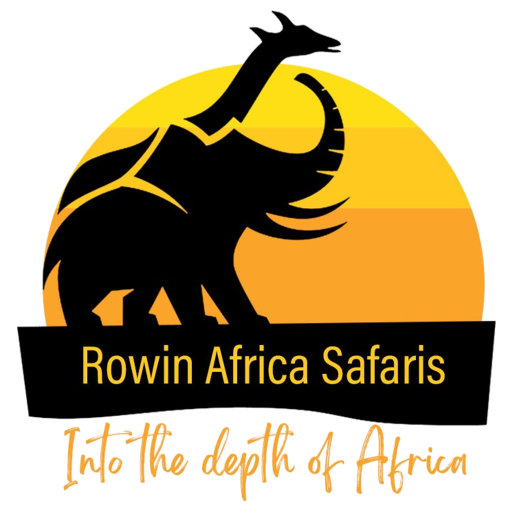Wildebeest Migration Serengeti Calving Season: Have you ever wondered why nearly two million wildebeests put themselves through the ordeal of the migration every year, then the Serengeti Calving Season is a good testament.
The Ndutu Plains – southern plains of the Serengeti turn the plains green after the November rains and fresh grazing is just what the wildebeest need for the energy-demanding calving season. Several hundred thousand wildebeests are about to be born in this season and it gets busy.
The Calving season is short-lived but epic in scale. In December, great waves of wildebeest come spilling out of the Masai Mara and into the Serengeti’s Southern region. The animals then spread into adjoining areas such as Ndutu region, Lake Masek and Ngorongoro Conservation Area.
It is an incredible scene, the last great concentration of large, land animals in the world, and the surrounding landscape is a beautiful one. The short-grassy savannah studded with rocky outcrops – Kopjes – the favorite haunt of the Serengeti’s leopards.
Generally, the Serengeti Calving begins in January, the pregnant wildebeests give birth and by February about 8000 baby wildebeests are born every day. The calving season carried on into March and is joined by other animals too. Tens of thousands of zebras and gazelles accompany the wildebeests on their trek and are taking advantage of safety in numbers to drop their young too.

The huge numbers of young and inexperienced animals are a magnet for Africa’s predators, the big cats – lions, leopards and cheetahs stalk the southern Serengeti along with spotted hyenas, black-backed jackals, and African wild dogs. Your chance of seeing predator – prey interaction and indeed a kill are very high during the Serengeti Calving Season, this great news for wildlife photographers if not for the wildebeest.
But the new-born wildebeest calves are quick to stand on their feet, standing in minutes and able to run with the herd within three days. Most survive the onslaught of predators and by the end of the March, the grass of the southern Serengeti are exhausted. The wildebeest begin marching west in great lines, across the Central Serengeti and to the muddy rivers that block their way back to the Masi Mara. Here the wildebeests pause and the notorious migration river crossings are about to begin.
Our Most Frequently Asked Questions about the Serengeti Calving Season
When Should I Book for the Calving Season?
Experiencing the Serengeti Calving Season does not need a bit of forward planning. It is high season, as can be expected when it is mostly dry weather and the game viewing is so good. Also the accommodations book out so fast.
The relevant months are January, February and March. If you have specific dates in mind then we recommend booking up to a year in advance, especially for February when the calving season is at its most dramatic.
If you are not specific about dates within the January to March Calving period, then we advise booking six to eight months a head – the sooner the better for February.

Where Should I Stay & For How Long?
The best camps to stay at for calving season lie in the Ndutu Area, South of the Serengeti. Many are semi-permanent tented camps set up each year in the path of the migration, enabling you to leave camp on early morning drives and head straight into the action. Your accommodation usually takes the form of a large, walk-in tented suite with large bed, outside seating area and a private bathroom.
What Activities will I Do?
Wildlife viewing during the calving season in Serengeti is usually enjoyed from the vantage of an open-sided 4×4 vehicle in the experienced hands of a professional guide. You will have two drives a day – one in the early morning and the other in the afternoon, returning the early evening with a spot – light leading the way.
The recommended accommodation for the calving season lies in privately run- concessions rather than the Serengeti National Park, your guide has the advantage of being able to drive off-road for exceptional sightings and you have the chance to go on walking safaris with Tanzanian Park Rangers.
Maasai Village are another popular activity, accompanied by your guide you can visit a local community to learn about Maasai culture and traditions, and watch Maasai warriors perform their famous jumping dance.
Other Serengeti’s Signature activities include hot-air ballooning available in the Ndutu Region but is an option in the Central Serengeti. It is an hour and a half’s early morning transfer from Ndutu and it is the best option to combine Ndutu with a stay in the Central Serengeti.
Is it only the Wildebeest Calving Season or do other Animals also have their Young at this Time?
If you are interested in seeing lots of baby animals of all types, then this is the time to go. Large numbers of zebra foals and gazelles fawns are also running around on the southern plains, using the cover of hundreds of thousands of wildebeest calves to try and avoid predators.
The sudden growth of greenery prompts many resident animals into their main birthing season, suddenly the open woodlands are home to warthog piglets and baby baboons, wobbly – legged giraffe and baby elephants with trunks they can’t quite control yet.
The equally abrupt abundance of herbivores means Africa’s large carnivores ensure their birthing season coincides with the arrival of the migration. Lions, cheetahs and leopards generally have their cubs at this time of year, sightings of which are among the most popular for photographers
Where Else Should I Go during the Calving Season?
If you want to keep it local but would like a complete contrast to the Serengeti and Ndutu, then Tanzania’s Tarangire National Park is a good choice. It is not high season over January, February and March and there will be some rain but the landscape is beautifully green, there will be very few other visitors and the wildlife very different to the migration experience.
Still in Tanzania, the best and most easily accessible beach destination is Zanzibar. January through March is a great time to visit the Spice Island. The days are warm and sunny and the Indian Ocean is at its clearest, making it an excellent time for divers and snorkelers.
